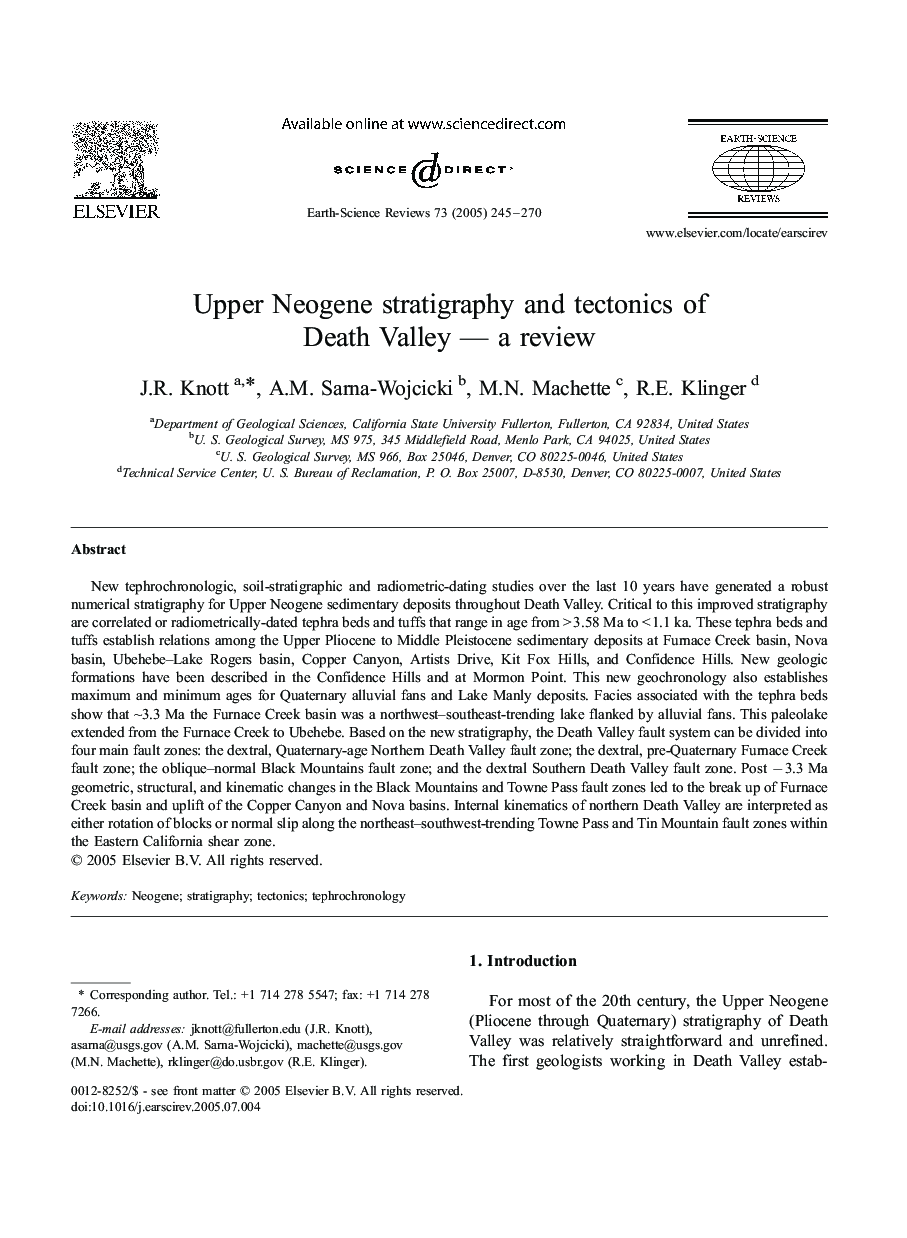| کد مقاله | کد نشریه | سال انتشار | مقاله انگلیسی | نسخه تمام متن |
|---|---|---|---|---|
| 9534285 | 1640060 | 2005 | 26 صفحه PDF | دانلود رایگان |
عنوان انگلیسی مقاله ISI
Upper Neogene stratigraphy and tectonics of Death Valley - a review
دانلود مقاله + سفارش ترجمه
دانلود مقاله ISI انگلیسی
رایگان برای ایرانیان
کلمات کلیدی
موضوعات مرتبط
مهندسی و علوم پایه
علوم زمین و سیارات
زمین شناسی
پیش نمایش صفحه اول مقاله

چکیده انگلیسی
New tephrochronologic, soil-stratigraphic and radiometric-dating studies over the last 10 years have generated a robust numerical stratigraphy for Upper Neogene sedimentary deposits throughout Death Valley. Critical to this improved stratigraphy are correlated or radiometrically-dated tephra beds and tuffs that range in age from > 3.58 Ma to < 1.1 ka. These tephra beds and tuffs establish relations among the Upper Pliocene to Middle Pleistocene sedimentary deposits at Furnace Creek basin, Nova basin, Ubehebe-Lake Rogers basin, Copper Canyon, Artists Drive, Kit Fox Hills, and Confidence Hills. New geologic formations have been described in the Confidence Hills and at Mormon Point. This new geochronology also establishes maximum and minimum ages for Quaternary alluvial fans and Lake Manly deposits. Facies associated with the tephra beds show that â¼3.3 Ma the Furnace Creek basin was a northwest-southeast-trending lake flanked by alluvial fans. This paleolake extended from the Furnace Creek to Ubehebe. Based on the new stratigraphy, the Death Valley fault system can be divided into four main fault zones: the dextral, Quaternary-age Northern Death Valley fault zone; the dextral, pre-Quaternary Furnace Creek fault zone; the oblique-normal Black Mountains fault zone; and the dextral Southern Death Valley fault zone. Post â 3.3 Ma geometric, structural, and kinematic changes in the Black Mountains and Towne Pass fault zones led to the break up of Furnace Creek basin and uplift of the Copper Canyon and Nova basins. Internal kinematics of northern Death Valley are interpreted as either rotation of blocks or normal slip along the northeast-southwest-trending Towne Pass and Tin Mountain fault zones within the Eastern California shear zone.
ناشر
Database: Elsevier - ScienceDirect (ساینس دایرکت)
Journal: Earth-Science Reviews - Volume 73, Issues 1â4, December 2005, Pages 245-270
Journal: Earth-Science Reviews - Volume 73, Issues 1â4, December 2005, Pages 245-270
نویسندگان
J.R. Knott, A.M. Sarna-Wojcicki, M.N. Machette, R.E. Klinger,